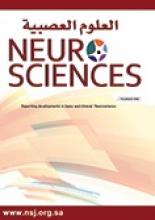Abstract
The International Subarachnoid Aneurysm Trial (ISAT) was designed as the first multi-central international prospective randomized trial aiming to compare the safety and efficacy of the 2 available treatments for ruptured intracranial aneurysms; endovascular coiling and surgical clipping. The initial results were published in the Lancet (2002), and it showed clearly a superiority of coiling over clipping in the treatment of ruptured intracranial aneurysms; 22.7% of coiled patients were dependent or dead compared with 30.6% in the surgical group with absolute risk reduction of 6.9%. The results of the ISAT drew huge attention from both scientific authorities and lay media. Despite criticisms, the study has made a significant impact on the treatment of aneurysmal subarachnoid hemorrhage, especially in the United Kingdom and Europe. Since their initial results, the ISAT group has published further papers and updates covering more interesting results regarding the risks of rebleeding, repeat procedures, epilepsy, and the cost effectiveness of both treatments.
- Copyright: © Neurosciences
Neurosciences is an Open Access journal and articles published are distributed under the terms of the Creative Commons Attribution-NonCommercial License (CC BY-NC). Readers may copy, distribute, and display the work for non-commercial purposes with the proper citation of the original work.






